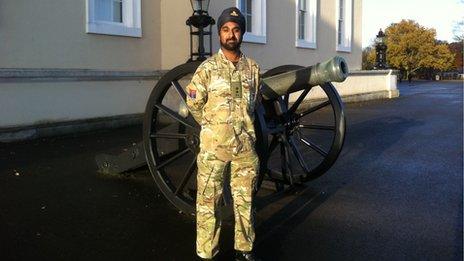Sikh prayer books return to military after 100 years
- Published
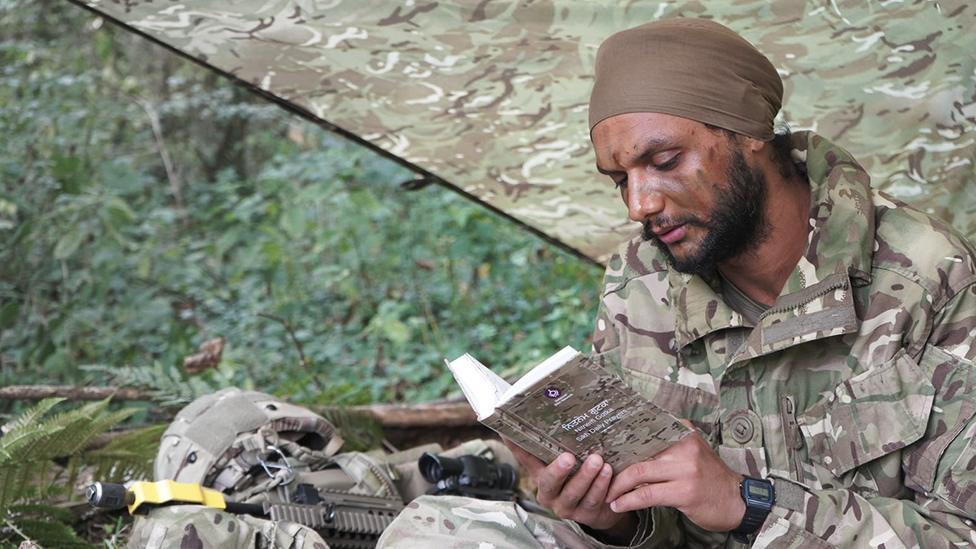
The Nitnem Gutkas were shared with military personnel in the British Army, as well as the Royal Navy and the RAF
For the first time in a century daily prayer books have been issued to Sikh military personnel in the British forces.
Major Daljinder Singh Virdee is in the British Army and has spent two years campaigning for the change.
The prayer books, called Nitnem Gutkas, were issued by the UK Defence Sikh Network at a ceremony in London.
The Ministry of Defence said it hopes to "directly support Sikhs practise a key component of their faith".
The Nitnem Gutkas have been printed in three languages in durable and waterproof material to withstand the rigours of military life.
The British Army Gutka has a camouflage cover, and the Royal Navy and RAF Gutka has a navy blue cover.
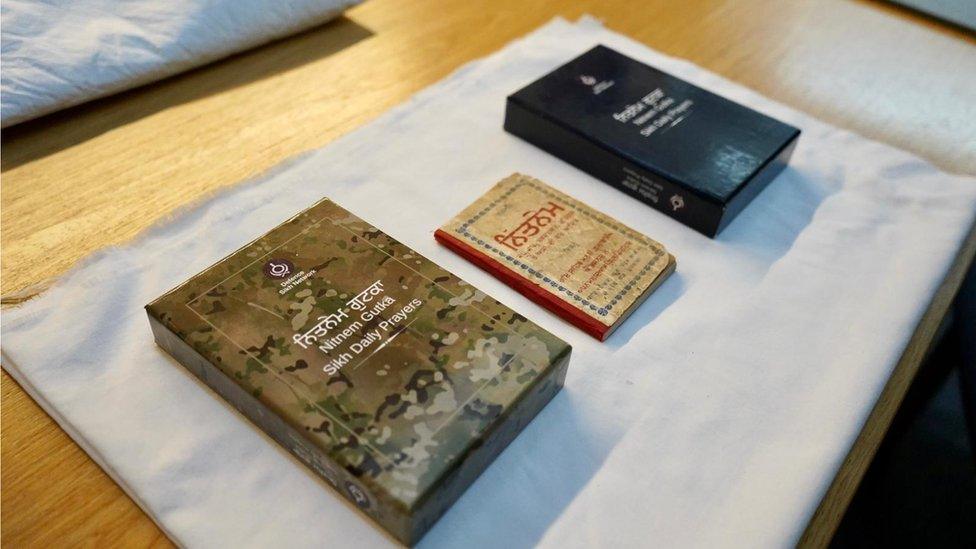
The two new Nitnem Gutkas, with the original military-issued Nitnem Gutka from 1914
Major Singh Virdee said he uses his Nitnem Gutka three times a day.
"The Army has been providing Christian religious texts for many years and I saw the opportunity there to open the door for the Sikh faith to provide Sikh texts," he said.
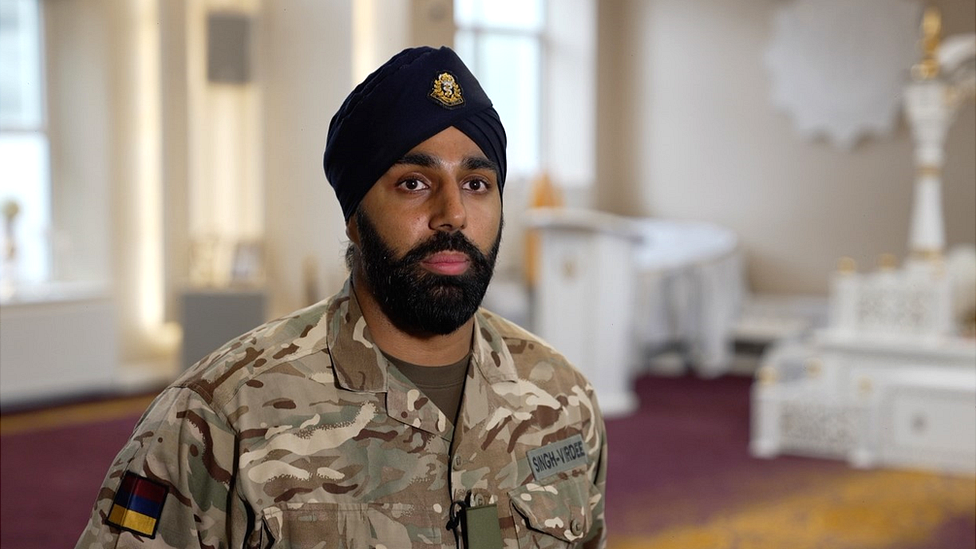
Major Daljinder Singh Virdee has been campaigning to bring Nitnem Gutkas to the MOD for two years
The Nitnem Gutkas were printed in Wiltshire and placed on a throne in a purpose-built vehicle for Sikh scriptures.
They were transported to the library of the Central Gurdwara temple in London, where they were officially issued to military personnel on 28 October.
As chairperson of the UK Defence Sikh Network, Major Singh Virdee has spent the past two years on the project.
"For Sikhs our scriptures are not just words, they are the living embodiment of our guru. We draw moral strength and physical strength from reading the scriptures every day, it gives us discipline and it grows us spiritually," he said.
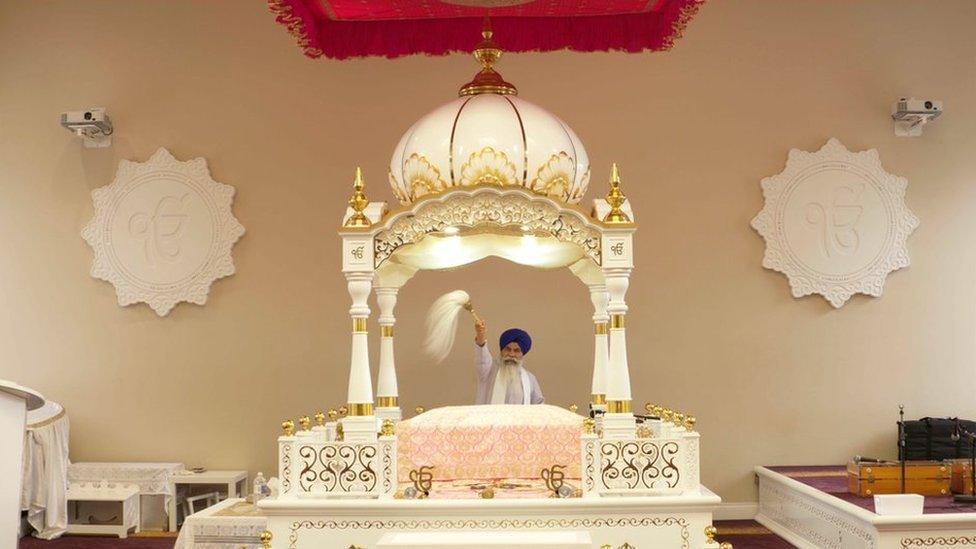
The Nitnem Gutkas were stored in the library of the Central Gurdwara temple in London
Nitnem Gutkas were first issued to military personnel more than a century ago, along with other articles of the Sikh faith including steel daggers, bracelets and wooden combs, but have never been issued again since.
There is an original military-issued Nitnem Gutka in the National Army Museum's archives, in London.
"I think we can safely say it's probably the earliest example of a Sikh Prayer Book from the First World War," said Alan Jeffreys, head of equipment and uniform at the museum. "It's an incredible example, and to survive under such conditions, from 1914, it's a very important object and tells so many different stories. It's very poignant."
He said Sikh soldiers were recruited to the British military from the 1840s onwards.
"One of the main reasons is because they'd fought so well, they had a martial tradition," he said. "They were very keen to reinforce the religious and martial traditions of the Sikh soldiers."
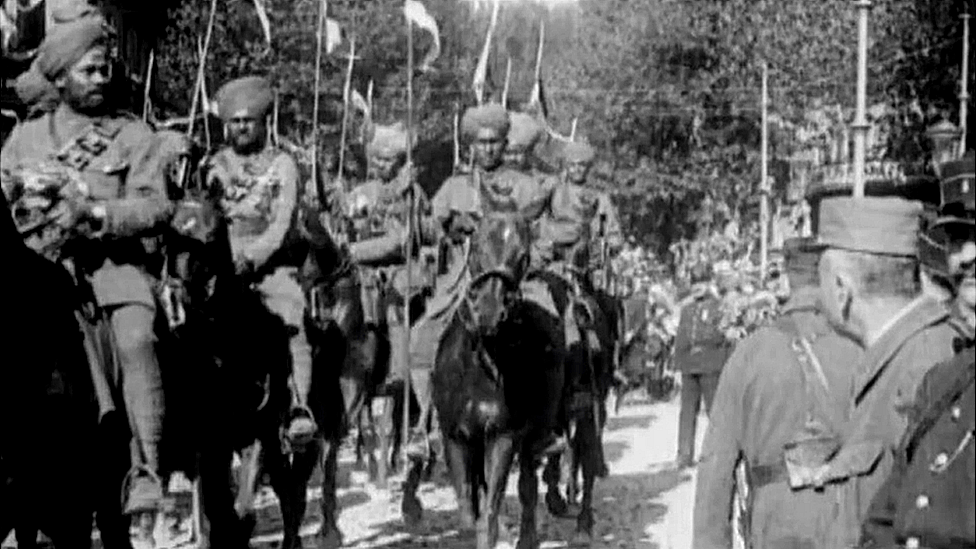
Nitnem Gutkas were first issued to Sikh personnel during World War One
Satveer Singh Padam designed the new version of the Nitnem Gutka and said he wanted to incorporate historical elements of the Sikh faith into the new version.
"We've always had symbolism of weaponry, it's part of our history. We have different weapons like a curved blade sword, or a double edged dagger, all these mean a great amount in Sikh history," he said.
A Ministry of Defence spokesperson said: "By providing a Nitnem Gutka for serving Sikhs across the UK MOD we hope to directly support Sikhs practise a key component of their faith wherever they travel and work in whatever conditions."
Major Daljinder Singh Virdee added: "The thing that will mean the most to me is when a Sikh will take this with them throughout their career, and it's a way for them to connect to their faith. That for me is the biggest reward that I could ask for."
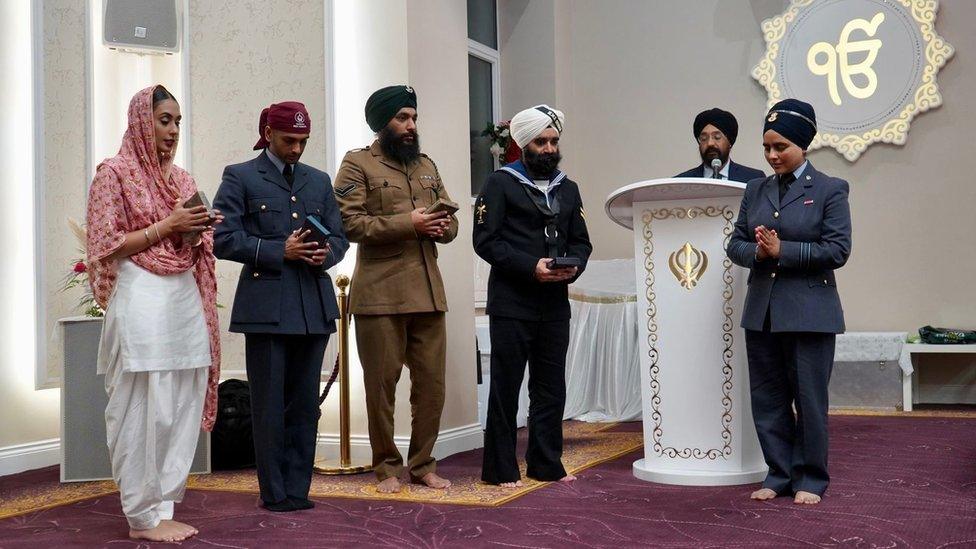
The new Nitnem Gutkas were officially issued to military personnel on 28 October
- Published30 October 2022

- Published22 May 2022

- Published13 September 2014
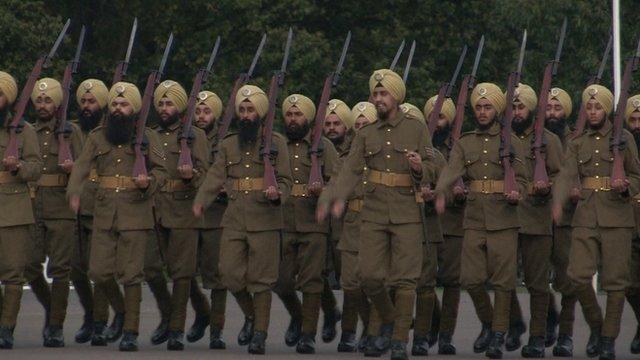
- Published22 November 2013
